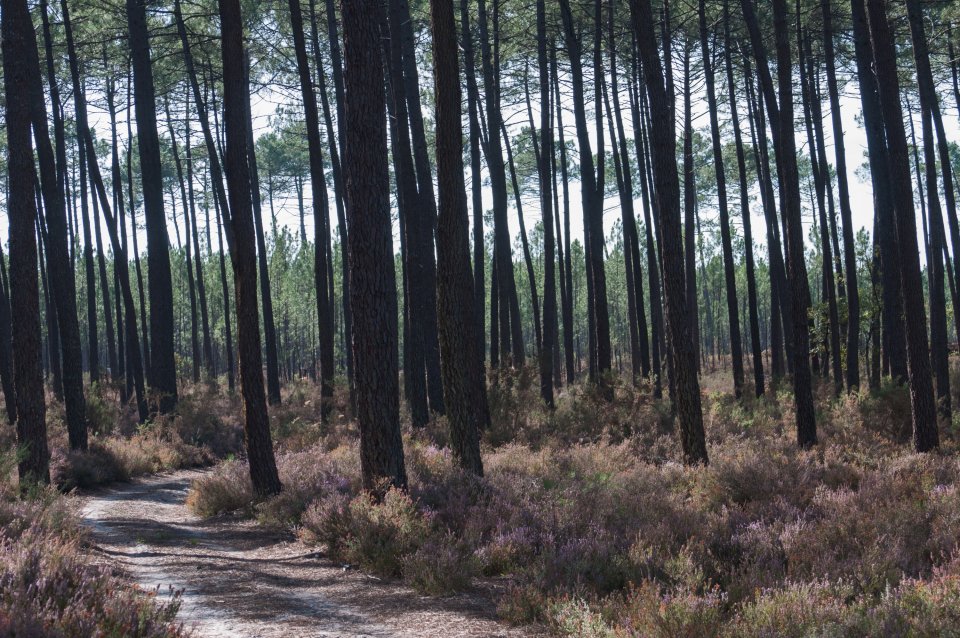
The objective of this project is to characterize the links between the production of maritime pine resin and the properties of the station. The program is particularly interested in the influence of soil (rather than climatic variations).
The experiment is conducted on the three types of stations that dominate in the Landes: dry heath, mesophilic heath and wet heath The results could make it possible to identify the most productive and therefore more interesting areas for the resin tapper.
The profitability of the resin tapper depends on a multitude of parameters. Some of them can be controlled, such as the method of harvesting or the productivity of the resin tapper.
On the other hand, certain parameters that are difficult to control, such as the climate, have a direct influence on resin production and therefore on the profitability of the activity. A good understanding of the links between resin production and environmental variables is therefore very crucial.
The resin from 23 trees per plot was harvested for 4 months in 2018 and again in 2019.
In dry heathland, the average yield was 2.97 kg/tree per year in 2018 and 2.40 kg/tree per year in 2019.
In mesophilic heathland, the average yield was 2.77 kg/tree per year in 2018 and 2.40 kg/tree per year in 2019.
In wet heathland, the average yield was 2.87 kg/tree per year in 2018 and 2.65 kg/tree per year in 2019.
The average yield does not seem to be correlated with the type of heath (close means and high standard deviations).
High variability in yield was observed between trees. It would appear that larger trees would produce more resin.
These trends will need to be confirmed with further experiments.
The aim of this experiment was to show whether or not there is a link between the production of Pinus pinaster resin and the type of heathland. In order to eliminate as much bias as possible, it is, therefore, necessary to fix the other variables. In other words, the three plots should have the same characteristics: same density, same dendrometric characteristics, same climate (rainfall, sunshine, temperatures), same genetic characteristics, etc.
The three plots are located in the commune of Captieux, the stands are from seedlings and are around 50 years old.
Weaknesses: there is dendrometric variability between plots (trees in wet heathland have an average circumference of 142 cm compared to 114 cm in dry heathland) and only two harvesting campaigns have been carried out. These two elements constitute biases for the interpretation of the results.
Strengths: This type of experiment is of major importance for the resin industry as it could help identify the optimal conditions for maximizing yields.
Another strong point of this experimentation is the involvement of a multitude of actors: the Aquitaine Forest Productivity Centre, the Regional Centre for Forest Property of New Aquitaine, Holiste and the Forest Cellulose Wood and Furniture Institute.
Following this experimentation, the wood will be analysed in order to highlight the impact of resin extraction on the quality of the wood.
Also, in order to increase knowledge of the factors that have an impact on resin production, a network of permanent plots will be set up in Aquitaine, but also in Spain and Portugal, as part of the SustForest Plus project.
Henri Husson (CNPF) h.husson@crpf.fr
Emmanuel de Montbron (Forest owner) info@londeix.com
Anne GENEIX - CRPF Aquitaine © CNPF
